African Jacana
- October 26, 2023
- 0 comment
The African Jacana, scientifically known as Actophilornis africanus, is a captivating bird species that has adapted to a unique and intriguing lifestyle. Often referred to as the lily-walker or the Jesus bird, this wader belongs to the family Jacanidae, and it is a distinctive avian species that can be found in sub-Saharan Africa.
African Jacana Physical Attributes

The African Jacana
- Scientific Name: Actophilornis africanus
- Lifespan: 5 to 10 years
- Habitat: Found along slow-flowing rivers or lakes with vegetation cover.
- Diet: Eats insects, crustaceans, snails, crabs, and small fish.
- Size: 9 to 12 inches long
- Weight: Males average 137g and females average 261g.
- Wingspan: Up to 50cm across.
- Conservation Status: Least Concern
- Population Trend: Stable.
One cannot mistake the African Jacana for any other bird due to its distinct physical attributes. It measures between 23 to 31 cm (9.1 to 12.2 inches) in overall length, and one noticeable characteristic is sexual dimorphism, where the female is, on average, larger than the male. These birds have chestnut upperparts, adorned with striking black wingtips, a rear neck, and an eyestripe. The underparts of adults also feature chestnut coloring, while juveniles display white plumage with a chestnut belly patch.
African Jacana Feather Coloration
African Jacanas are striking birds with unique and colorful plumage. Their overall coloration is a combination of chestnut brown, white, black, and yellow-orange.
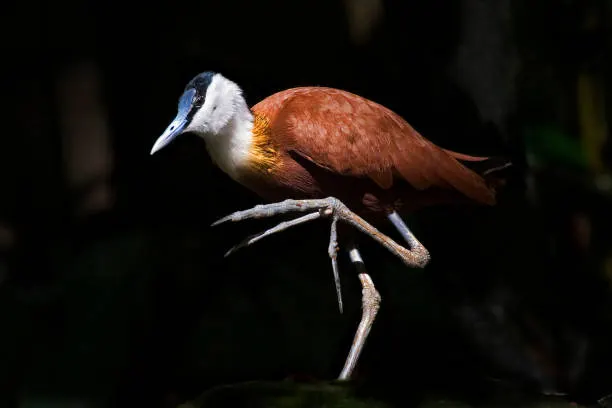
Chestnut brown: The majority of the African Jacana’s body is covered in chestnut brown feathers. This includes the back, wings, and tail. The chestnut brown coloration provides camouflage among the reeds and vegetation of their wetland habitats.
White: The front of the neck and head are white, creating a striking contrast with the black back of the head and the chestnut brown body. The white feathers may help the bird to appear larger and more intimidating to potential predators.
Black: The back of the neck and head are black, forming a cap-like appearance. A black stripe extends from the eye to the back of the head. The black coloration may help to break up the bird’s outline and make it more difficult to see against the dark background of the water.
Yellow-orange: The breast feathers are a vibrant yellow-orange color. This coloration may be used for attracting mates or for signaling to other jacanas.
Blue: The African Jacana has a distinctive blue shield on its forehead. This shield is made up of a patch of bare skin that is surrounded by blue feathers. The blue shield may be used for attracting mates or for signaling to other jacanas.
Species Type
The African Jacana, scientifically known as Actophilornis africanus, is a member of the Jacanidae family. This family is known for its unique adaptations that allow its members to walk on floating vegetation in shallow lakes The Jacanidae family is also referred to as “Jesus birds” or “lily trotters,” which is a testament to their ability to walk on water seemingly.


The African Jacana is a wader, a group of birds that are typically found in wetland environments. Waders are characterized by their long legs, which they use to wade through water in search of food.
The African Jacana’s distribution spans across sub-Saharan Africa, making it a common sight in the region’s diverse wetland habitats. Its presence contributes significantly to the rich avian diversity of the region. The bird’s unique adaptations and behaviors make it a fascinating subject for birdwatchers and researchers alike.
Flight Characteristics
The African Jacana, like all members of the Jacana family, is not particularly adept when it comes to flying. They are weak fliers and usually only fly short distances with their wings curved, legs hanging, or held horizontally behind. Their flight is often described as weak and awkward, as they fly low over the water with their long legs and toes dangling behind.


During the flight, they issue a loud and fast staccato ‘kreep – kreep – kreep’, almost like a nasal trilling sound. Alarm calls are, by necessity, extremely loud and consist of sharp single notes similar to ‘kaakup’. This unique flight pattern and vocalization during flight add to the distinctiveness of this species.
Despite these seemingly clumsy flight characteristics, the African Jacana’s ability to walk on floating vegetation in shallow lakes is unparalleled. This adaptation allows them to traverse their wetland habitats with ease and grace.
Habitat & Distribution
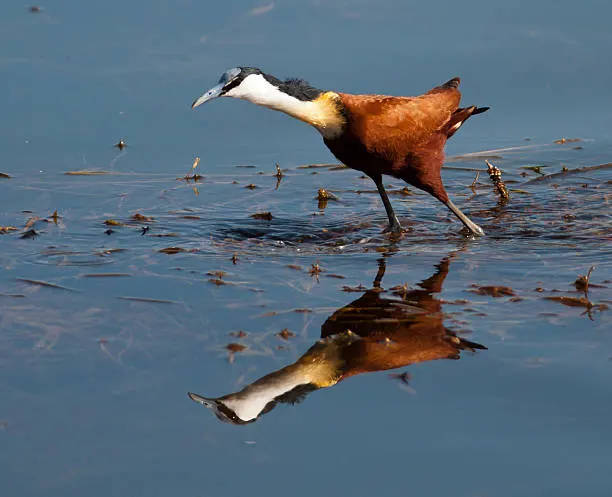
A defining feature of the African Jacana is its long toes and claws, which enable it to perform a rather extraordinary feat – walking on floating vegetation in shallow lakes. This specialized adaptation makes shallow lakes their preferred habitat. These birds are not confined to a single locale; they can be found in various regions worldwide within the tropical zone.
Migration Patterns
The African Jacana, scientifically known as Actophilornis africanus, is a bird species that exhibits a unique pattern of movement. Unlike many bird species that follow predictable migration patterns, the African Jacana’s movements are rather unconventional.
The African Jacana is considered to be resident and nomadic. This means that while they have a home range where they spend most of their time, they do not strictly adhere to the typical migratory patterns followed by many other avian species. Instead, their movements are influenced by environmental conditions such as flooding or drought.

During times of flooding or drought, African Jacanas move to new habitats, searching for spots with lily pads where males like to construct their nests. They move from west to east and down south reaching as far as South Africa. In terms of Southern Africa, they are found across Zimbabwe, Mozambique, northern Namibia, and northern Botswana. In South Africa, African Jacana are abundant in the eastern parts and less common in the rest of the country.
This pattern of movement allows the African Jacana to adapt to changing environmental conditions and ensure access to suitable habitats and resources. It’s a testament to the bird’s adaptability and resilience in the face of environmental changes.
Behavioral Traits
One of the most astonishing aspects of the African Jacana’s behavior is its highly unusual mating system. This species practices polyandry, where one dominant female maintains a harem of multiple males. However, what’s even more intriguing is the fact that it is the male who takes on the responsibility of caring for the chicks after the female lays her eggs.

This polyandrous mating system in African Jacanas is a rare and unique phenomenon in the avian world. While most bird species adhere to monogamous or polygamous mating systems, the African Jacana’s strategy is quite the opposite. The dominant female forms a harem of males, sometimes numbering up to four or more, and mates with each of them. The males, however, bear the primary responsibility for incubating the eggs and rearing the chicks. This remarkable role reversal, where the males act as dedicated parents, is a captivating aspect of the African Jacana’s behavioral repertoire.
Role in Ecosystem


As a wader, the African Jacana plays an important role in maintaining the ecological balance of its habitat. They are active insectivores, feeding on insects and other small invertebrates found on the surface of the water or among floating vegetation. In doing so, they help control insect populations in their ecosystem, contributing to the overall health and balance of their environment.
Dietary Habits
The African Jacana is primarily insectivorous, with a diet consisting of insects and other small invertebrates that they pick from the floating vegetation or the surface of the water. This feeding behavior is another critical aspect of their contribution to their ecosystem.

The African Jacana’s specialized diet of insects and invertebrates plays a pivotal role in the delicate balance of their wetland habitats. Their ability to pick insects from the surface of the water and floating vegetation keeps the insect population in check. In turn, this control over insect populations prevents potential overpopulation and ecological disturbances in these ecosystems. Thus, the African Jacana, through its feeding habits, indirectly supports the well-being of other flora and fauna in its habitat.
Interesting Facts
- Unique Mating System: African Jacanas exhibit a highly unusual mating system where one dominant female maintains a harem of multiple males. After egg-laying, each male takes on the responsibility of raising a brood alone, showcasing a remarkable role reversal within the avian world.
- Floating Nests: African Jacanas construct floating nests, ingeniously designed from aquatic vegetation like reeds and sedges. These nests provide a safe haven for their eggs and later, their chicks. Placed atop floating vegetation, they offer protection from ground-based predators and some insulation from temperature variations in the water.
- Paternal Care: After the eggs are laid, it is the males who take over the incubation process. They vigilantly guard the nests and ensure the well-being of the developing embryos. This level of paternal care is a rare sight in the avian world and is a testament to the African Jacana’s remarkable evolutionary adaptations.
Nesting Habits
The African Jacana’s nesting habits are remarkable in their own right. As mentioned, they construct floating nests made from a variety of aquatic vegetation. These nests serve multiple purposes, primarily as a safe place to lay their eggs and rear their young.
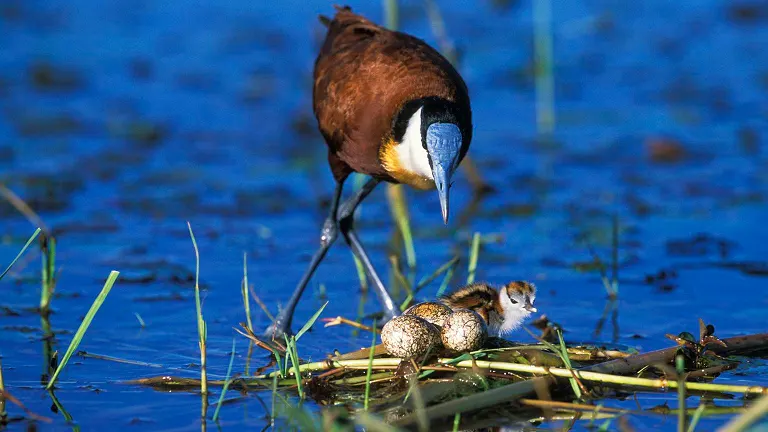
The floating nests are ingeniously designed to stay afloat on the water’s surface, even as water levels fluctuate. They are securely anchored to the surrounding vegetation, providing stability during windy conditions or when chicks are active within the nest.
The number of eggs in a typical clutch is four, and these eggs are distinctively marked with black spots and have brown coloring, providing camouflage amidst the aquatic vegetation. The entire nesting process, from constructing the nest to incubating the eggs and raising the chicks, is a testament to the African Jacana’s adaptability and survival strategies in its wetland habitat.
Vocalizations & Sound Mimicry
In addition to their physical traits and fascinating behavior, African Jacanas also exhibit intriguing vocalizations. Their calls include a repeated honking “kyaaan” and a wheezy, hurried “skreeeeeet,” most commonly heard during flight. These vocalizations serve as a means of communication among individuals, particularly during flight. They help establish territories, locate potential mates, and communicate about environmental cues and potential threats.

The vocal repertoire of the African Jacana is not only a means of communication but also a fascinating aspect of their behavior. The honking “kyaaan” is often used during flight and signals the bird’s presence and territorial boundaries. The wheezy “skreeeeeet” is another vocalization that is characteristic of these birds, and it is often associated with their movements, especially during foraging. These vocalizations provide valuable insights into the social dynamics and behavior of the African Jacana within its ecosystem.
African Jacanas rely on vocalizations, especially during flight, to communicate with one another. These calls are essential for establishing territories, locating mates, signaling danger or other environmental cues, and maintaining social cohesion within their groups.
Communication Methods
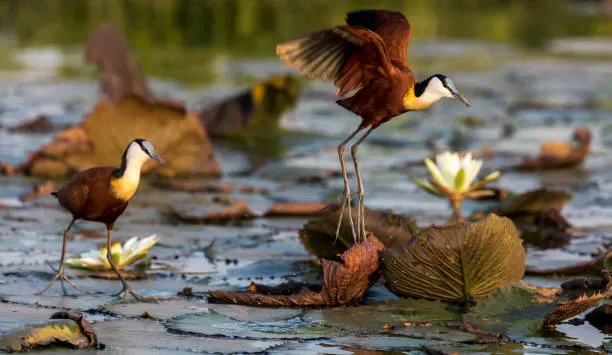
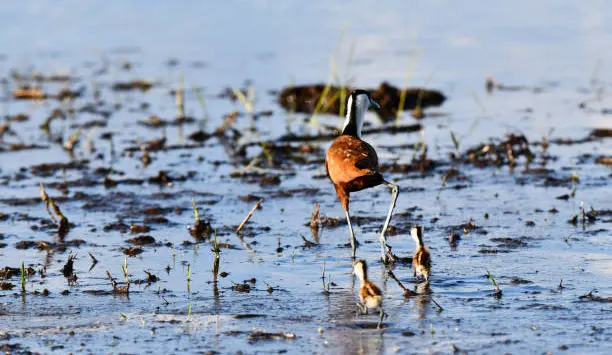
Understanding the vocal communication of African Jacanas is integral to unraveling their social dynamics and behavioral strategies. In their often densely vegetated and intricate wetland habitats, clear and effective communication is crucial for coordination within their groups and the establishment of territories. Through vocalizations, African Jacanas convey a wide range of information that aids in their survival and reproduction.
Conservation Status
The International Union for Conservation of Nature (IUCN) currently lists the African Jacana as “Least Concern.” This classification is primarily due to its wide distribution across sub-Saharan Africa. However, despite its current status, there are potential threats on the horizon.
Ecological Significance
African Jacanas are vital contributors to their ecosystems. By feeding on insects and other small invertebrates, they play a crucial role in controlling these populations and help maintain the ecological balance within their habitat. Their presence has a cascading effect on the health of their ecosystem.

The ecological significance of African Jacanas cannot be understated. As insectivores, they actively contribute to the regulation of insect populations within their wetland habitats. The delicate balance of these ecosystems depends on the control of insect populations, and the African Jacana plays a crucial role in preventing potential overpopulation and its associated negative consequences.
Furthermore, their foraging behavior directly influences the abundance and diversity of insect species in their environment. This, in turn, impacts other trophic levels, such as the birds and fish that also depend on insects as a food source. The ripple effect of their feeding habits extends throughout the entire wetland ecosystem, making them a linchpin species in the intricate web of life in their habitat.
Conservation Status and Challenges
While the African Jacana is presently listed as “Least Concern,” it is important to remain vigilant about potential challenges. Human activities, such as habitat loss and degradation, could pose future threats to this species and its unique ecosystem.
Habitat loss and degradation due to human activities pose one of the most significant potential challenges to the African Jacana. As wetlands and shallow lakes are drained or converted for agricultural or industrial purposes, the crucial habitats that these birds rely on become increasingly fragmented and degraded. The destruction of these wetland areas not only directly impacts African Jacanas but also disrupts the intricate balance of the entire ecosystem.
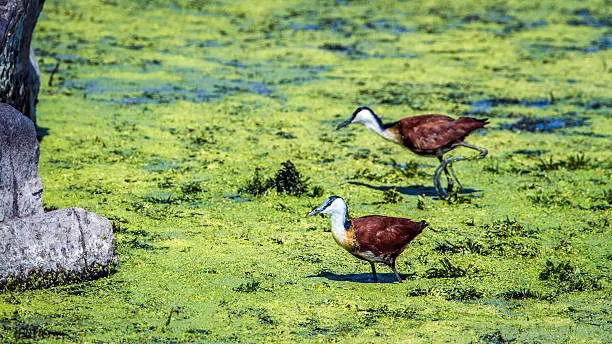
Invasive species are another concern. The introduction of non-native plants or animals can alter the composition and dynamics of wetland ecosystems, potentially affecting the availability of resources for African Jacanas. Moreover, pollution from runoff and other sources can have detrimental effects on water quality, which in turn can affect the health of the aquatic ecosystems where these birds forage.
Climate change is also a looming threat. Alterations in temperature and precipitation patterns can lead to shifts in the availability of suitable breeding and foraging areas for the African Jacana. As water levels and vegetation patterns change, these birds may face increased challenges in their efforts to successfully raise their young and secure their own survival.
Research and Ongoing Studies
In the realm of avian biology, the African Jacana is a fascinating subject of study. Ongoing research into its highly unusual polyandrous mating system and other aspects of its behavior and ecology could provide valuable insights into avian behavior and evolution. These studies contribute to our broader understanding of the natural world.
Ongoing studies on African Jacanas shed light on several intriguing aspects of their biology and behavior. Researchers are delving into the intricacies of their polyandrous mating system, seeking to understand the evolutionary forces that have shaped this unique reproductive strategy. This research extends into the genetic and ecological dimensions, exploring how such a system can persist and thrive in their wetland habitats.

Additionally, studies are uncovering the intricacies of their foraging behavior and how it influences local insect populations and, by extension, the overall health of the wetland ecosystems. Researchers are using advanced techniques, such as GPS tracking and stable isotope analysis, to gain insights into their movements and dietary preferences.
Furthermore, scientists are investigating the potential impacts of climate change on African Jacanas. By monitoring temperature and precipitation patterns, and by analyzing changes in the distribution of these birds, researchers can anticipate how the species may adapt to shifting environmental conditions.
Educational and Ecotourism Opportunities
The unique behaviors and striking appearance of the African Jacana make it a compelling subject for birdwatchers and nature enthusiasts. Its presence can significantly enhance ecotourism opportunities in areas where it is found. By learning about and appreciating this captivating species, people can develop a deeper connection to the natural world and the importance of conserving it.
The African Jacana’s captivating behaviors and intriguing adaptations present remarkable educational and ecotourism opportunities. Birdwatchers and nature enthusiasts flock to regions where these birds can be observed, offering a chance to witness their remarkable polyandrous mating system, floating nests, and distinctive calls. These birdwatching experiences not only foster a connection with the natural world but also contribute to local economies through ecotourism.

For educators and researchers, the African Jacana serves as an excellent study subject for ecological and behavioral studies. Observing these birds in their wetland habitats can provide valuable insights into avian biology and evolution, as well as the broader implications for wetland conservation.
As guardians of our planet’s biodiversity, we have a responsibility to ensure that the African Jacana, the Lily-Walker of Africa, and all the unique species it shares its habitat with, continue to thrive for generations to come. By valuing and protecting these fascinating birds and the ecosystems they inhabit, we contribute to the rich tapestry of life on Earth.


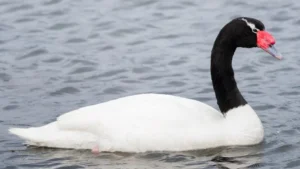
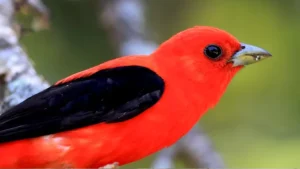

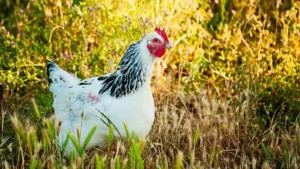
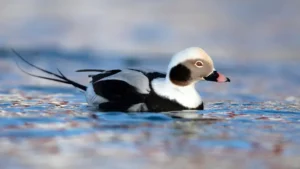

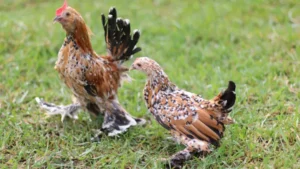
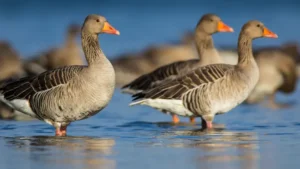
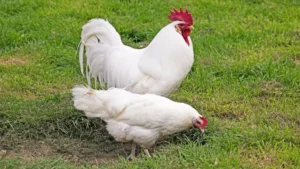

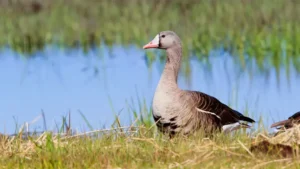
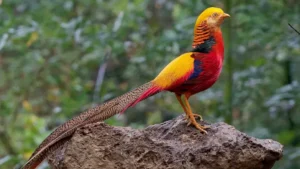
Leave your comment